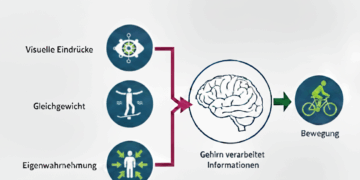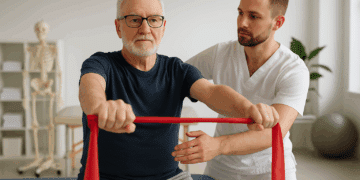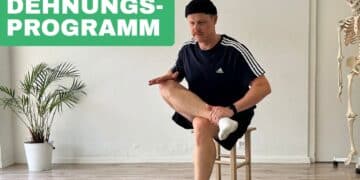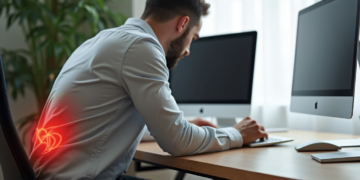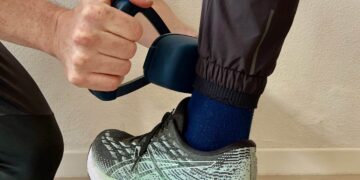Your routine stretching program
Your stretching program
Stretching is an essential foundation for your mobility and well-being. The importance of stretching is often underestimated. Just observe the animals around you - not the muscular training partners from the gym, but the natural movements of animals. A tiger, a cat, a cow or a horse - they all stretch instinctively. Even the Vikings did stretching exercises before their campaigns.
Of course, there are times when excessive stretching before peak sporting performance can be a hindrance. But as with everything in life, the right dosage is crucial. If you are never fit on Sundays, you may never have found the right balance.
The stretching program offers you the opportunity to increase your mobility through targeted stretching. More mobility means more freedom of movement. Targeted movement after stretching gives your brain security and more freedom of movement. Movement sequences can then be performed better and without pain. Of course, this does not apply if there is structural damage.
What I really want to share with you is the importance of stretching for your flexibility. If you don't move much or suffer minor injuries to muscles or fascia due to intense strain, connective tissue bridges can form between fascia, muscles and skin during the recovery phase. These connections restrict your mobility and prevent you from developing your full movement potential. We all want to avoid this! That's why I recommend our stretching program.
So let's get active! Current studies show that long-lasting stretches are particularly effective. Hold each stretch for at least as long as it takes to feel a sense of relaxation - this can be between 30 seconds and 1.5 minutes. Avoid rocking; continuously adjust the intensity of the stretch. Active stretching, as practiced in soccer before a game, for example, prepares your muscles and joints optimally for peak performance.
Remember: stretching is like brushing your teeth - an integral part of personal hygiene!
After an intensive training session, you should let yourself wind down and promote the regeneration processes. Methods such as ice baths, massages or targeted stretching support the body's own recovery and stimulate the metabolism.
I recommend a stretching program. Once you have completed it several times, you can choose shorter variations. Stretch all muscle groups and then concentrate particularly on the areas you have noticed. It is best to stretch immediately after exercise and again about 2-3 hours later. Always pay attention to the quality of your execution. If in doubt, clarify the stretching program with your Physiotherapists or trainer.
Your stretching circuit
16 exercises for your stretching program:
Shoulder stretching:Sit in the basic position. Place your right arm on your left shoulder and pull your right elbow towards your body with your left arm. Feel the tension in your right shoulder. To increase the stretch, rotate your arm slightly outwards. Repeat this on the other side.

Triceps stretch:In the basic position or standing, place your right arm behind your head. The left arm pushes the right elbow down while the right hand pulls towards the shoulder blade. You will feel a stretch in your triceps. If you look towards your left armpit, you may also notice a pull in your neck.

Chest expansion:Stand sideways to the wall with the leg closest to the wall slightly bent. Your upper body and hips should also be leaning towards the wall. Your arm is at a 90-degree angle to the wall, slightly above shoulder height. Turn away from the wall and feel the stretch in your chest and shoulders.
Stretching the hand extensors:Extend the back of the hand forward and rotate it inwards; pull back on the fingers of the outstretched hand with the other hand (see picture) for an effective forearm stretch.
Hand flexor stretch: Standing, stretch one arm out and turn your hand outwards so that your fingers are pointing towards your body. With the other hand, pull your fingers and thumb towards your head.
Latissimus stretch:Position yourself to the side of the door frame or a post. Press with your lower hand against your upper hand and cross the leg that is further away behind the front leg. You form an elongated C and can vary the intensity of the stretch by applying more pressure or shifting your weight backwards.
Butt stretch:Sit up straight and place one leg over the other. Hold the upper leg by the ankle and knee. You will now feel a stretch in your buttocks or on the outside of your thigh. Try to bend forward with a straight back to intensify the stretch.
Front of the thigh:Stand on one leg and grasp the other leg at the ankle towards the buttocks with your hand, tensing your abdomen so that you can feel the stretch in the front thigh more intensely.
Back of the thigh:Take a step forward and shift your weight onto your back leg; the front leg only has its heel on the floor. If necessary, support yourself on the bent back leg and make sure that your spine remains straight.
Calf stretching:Perform this exercise in two variations: once with your leg extended and once with your knee bent (see video). Find a curb or a wall; press the forefoot against the wall and bring the knee towards the wall - both with the leg extended and with the leg bent. The third variation is in a stepping position with the back leg extended.
Adductor stretching:Squat down and stretch one leg out to the side; support your hands on the floor and make sure to keep your back straight. You can turn the outstretched leg inwards or outwards to increase the intensity of the stretch.

Hip flexor stretch:Lunge forward, holding on to the front if necessary. Make sure that your hips and upper body form a line and shift your weight forward - your knee should not extend beyond your toes - to achieve an effective groin stretch.

Butt stretch:The starting position is the quadruped position: one leg crosses under the other so that the knee is virtually under the chest; the back leg remains stretched and the forehead rests on the back of the hand. You will feel a stretch in your buttocks and the side of your thigh or lower back.
Front of the thigh:Lie sideways on the floor again; hold the lower leg with the lower hand and pull the upper leg backwards at the ankle so that the upper body and thigh form a line; feel the stretch in the front thigh - it is important to tense the deep lower abdominal muscles.
Posterior thigh stretch:Lie on your back on the floor; one leg remains stretched out on the floor while you pull the other upwards using a belt or strap. Feel the tension on the back of the thigh - if you bend the leg slightly, the stretch may be more noticeable in the calf. A personal tip: you can vary the intensity by turning your foot inwards or outwards.
Quick storage:Lie on your side on the floor; the lower leg is stretched out, the upper leg lies over it so that the foot rests in the hollow of the knee of the lower leg. Place your lower hand on your upper knee while your upper body turns back; try to rest your arm on the floor and stay in this position for a while.
This stretching program not only increases your suppleness, but also improves your mobility in the long term! We recommend actively moving each stretched joint after the stretching exercises - it's like reprogramming. In this way, your brain stores the newly acquired flexibility more effectively.
We will be happy to help you improve your mobility and create an individual stretching program with you. Do not hesitate to contact us.
Categories
- Osteoarthritis
- Leg
- Extensions
- Dry needling
- Elbow
- Foot
- Balance
- Hand
- Hip
- Pine
- Knee
- Headache
- Lymphatic drainage
- Mobilization
- Muscle pain
- Myofascial therapy
- Neck pain
- Physiotherapy Höngg
- Physiotherapy Wipkingen
- Physiotherapy Zurich
- Rehabilitation
- Back pain
- Shoulder arm
- Shoulder pain
- Pregnancy
- Dizziness
- Sports
- Trigger points
- Exercises
- Lower leg
- Injury prevention
- Wade
- What to do?
- Wound healing
Neuro-focused training in physiotherapy
What is neuroathletic training (NAT)? Neuroathletic training (NAT) is a modern and holistic therapeutic approach...
Physiotherapy for seniors Zurich Wipkingen
Movement is life - even at 60+ Growing older brings with it many positive aspects: more time for family and...
Sprained foot
Holistic treatment of ankle sprains: Effectively counteracting sprains of the foot Ankle sprains,...
Stretching program
Your stretching program Stretching is an essential foundation for your mobility and well-being....
Patience after injuries
Please be patient and do targeted training after injuries If you have sustained an injury, please...
Workplace ergonomics - Do you work at a computer?
Ergonomics at the workplace: Effective measures to combat back pain and neck tension You're probably familiar with...
Strength measurement - We monitor your therapy success
Measuring strength in physiotherapy: A key to targeted and effective treatment The importance of measuring strength...

















